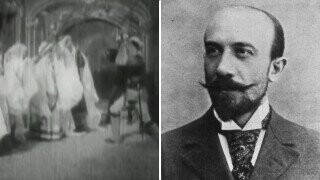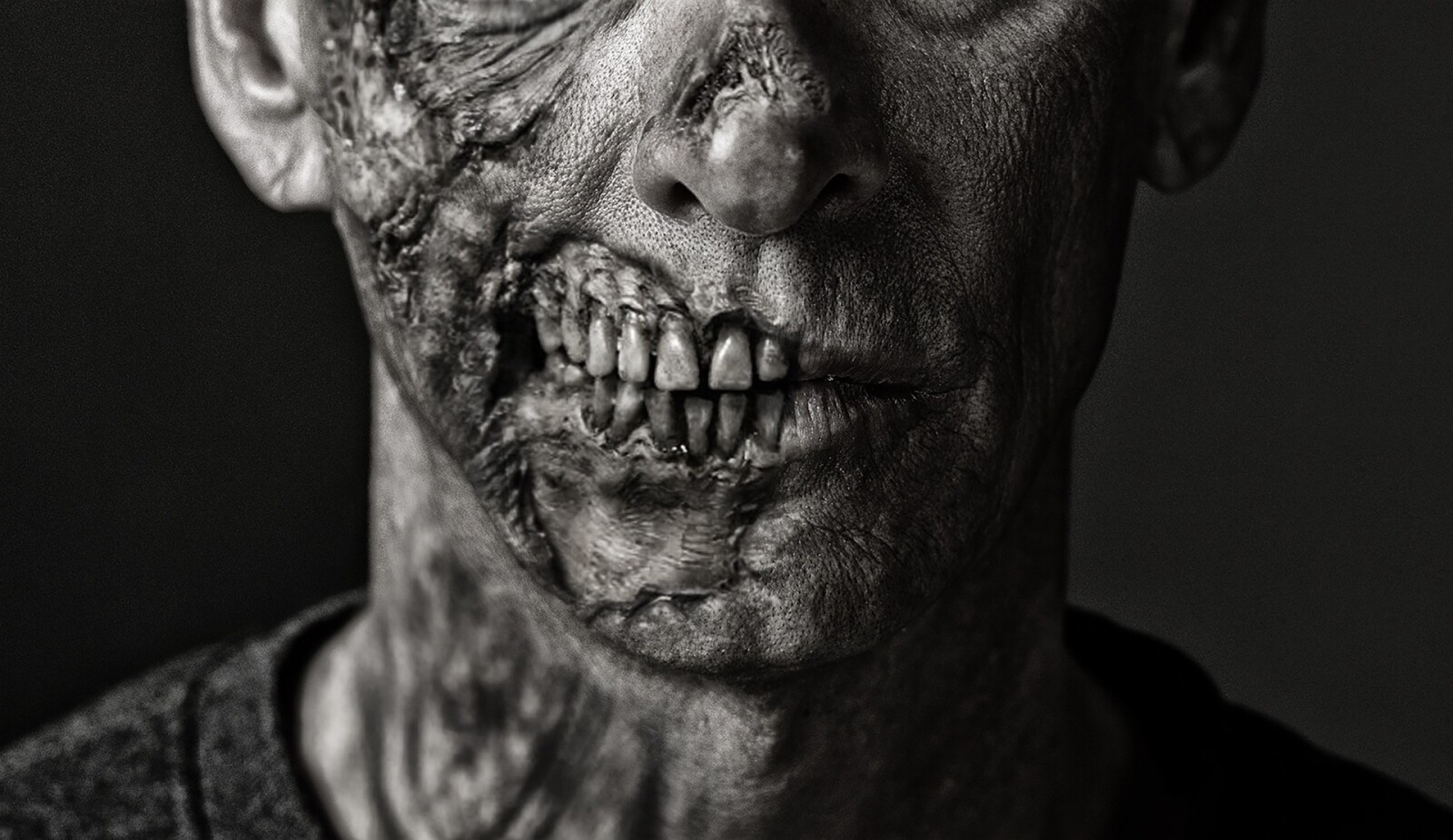The 3-Minute Silent Film That Invented Scary Movies

It’s not only front lawns and wardrobes that turn a whole lot scarier come this time of year. One of the most beloved activities to settle into, just as the weather starts to turn to the perfect type of cold drizzle to cancel plans in, is a spooky movie. Just as a warm apple cider soothes the stomach or a nice chunky sweater keeps you cozy, there’s nothing quite like popping on a good old fashioned scary movie. You get to raise your heart-rate and take a tiny two-hour thrill ride, all while working on developing a solid, deep couch imprint that you can spend most of the chilly months to come with your rear end firmly slotted into.
Not to mention that lately, the horror movie has started to leak out of halloween fare and into the world of critical acclaim, led by studios like Blumhouse and A24. It turns out you can trick even the snobbiest of film critics into saying horror movies are good as long as you explain that the vampire was actually a manifestation of Family Trauma. Jordan Peele was even able to add another Oscar to horror's measly 6-statue trophy case with Get Out. This has led horror maybe further into the mainstream than it has been in many years, no longer just a satellite genre occupied by thrillseekers and gorehounds. Of course there’s exceptions, like Hitchcock and Kubrick’s Shining, but there was an extended period of time where the idea of horror called to mind the cheap slasher more than high art.

It’s enough to ask, seeing the heights (and at the same time, depths) that horror movies have grown to encompass, when exactly did creepy-crawlies make their way to the silver screen? It’s a natural occurrence that you’d have to assume that any form of storytelling would start bringing in the ancient and beloved genre of the ghost story. People today still sometimes say they have trouble understanding why anyone would voluntarily watch something that scares them, but it’s not a new phenomenon. People have long loved trading stories that would make the scaredy-cats among them soak their scratchy burlap pantaloons, or turn their nice white togas an ombre yellow. There probably hasn’t been a single year of human civilization that didn’t contain at least one “dark and stormy night.”
Don't Miss
Looking into the first flick to antagonize audiences, there’s a couple that will frequently pop up. One of those is the 1920 film The Cabinet of Dr. Caligari. It’s not too difficult to find sources calling it the “first horror movie,” and it’s understandable why it gets slapped with that moniker. It was an early film designed, really, to unsettle the audience, in the same way that we associate with modern horror. After all, we’re talking about a genre that uses reports of audiences fainting or, well, rapidly eating their popcorn in reverse as a badge of pride.

It also matches up more closely with the modern idea of a movie, at least as far as runtime and plot. It clocks in at a slim 51 minutes, which, despite being only about one-third of the first part of an Avengers movie, is still within the realm of our idea of a feature film. It predated talkies as well, but didn’t let its lack of spoken dialogue kneecap a full, and extremely weird, story. Combine that with how it’s revered as a masterpiece and foundational work of horror even today, and how it kicked off a spree of Jekylls and Hydes and the like in the years following, it’s undeniably one of the earliest and most important “scary movies.”
There’s another movie, though, that I'll be the first to admit is a much less thrilling watch, but does beat out Caligari by a solid two decades. This movie, released in 1896, was titled Le Manoir du Diable, or The House of the Devil. It was directed by professional magician and filmmaker George Melies, who in fact is also responsible for another early piece of film history that many might be familiar with: A Trip To The Moon. Even if you don’t know the name, you probably recognize the image of a moon, with a spaceship lodged firmly in its right eye. His films were incredibly short, in line with the times, but his creativity and knack for illusion made them sensations in their own right. House of the Devil, however, even predates this 1902 film by a couple of years.
And thanks to a lucky rediscovery of the movie and the magic of YouTube, we can actually watch all three minutes and change of Melies’ silent film today.
Watching it, of course, I’d hazard a guess that your heart-rate would jump more from an audio ad starting in another tab than by anything actually contained in the footage. As to be expected from a magician-turned-director, it’s full of visual trickery that might remind you more of home movies you made as a kid than any sort of spooky Halloween blockbuster. Maybe this anticlimax is exactly why labeling it the “first horror movie” feels more than generous. Just remember that in the era this would have been shown to people, effective sleight of hand was probably enough to get you labeled as a prominent occultist. In 1890, a three-minute movie where the devil made a bench disappear was probably the equivalent of a snuff film.
But execution and length aside, it’s still a pretty fascinating peek at an early film pioneer looking at the emergence of the moving picture and thinking to themselves, “I bet I could use this to make some people really lose their shit.” I don’t think it’ll be making it into any fright night movie festivals, but it’s fun to know that a French magician making a bunch of ghosts appear was a step on the path to me losing a week of sleep in 8th grade over the first half of The Ring.
Top Image: Public Domain/YouTube